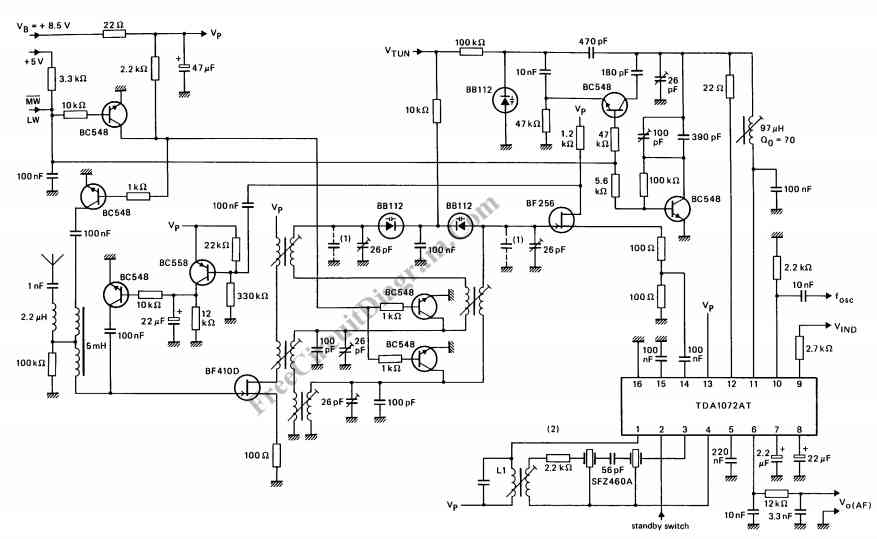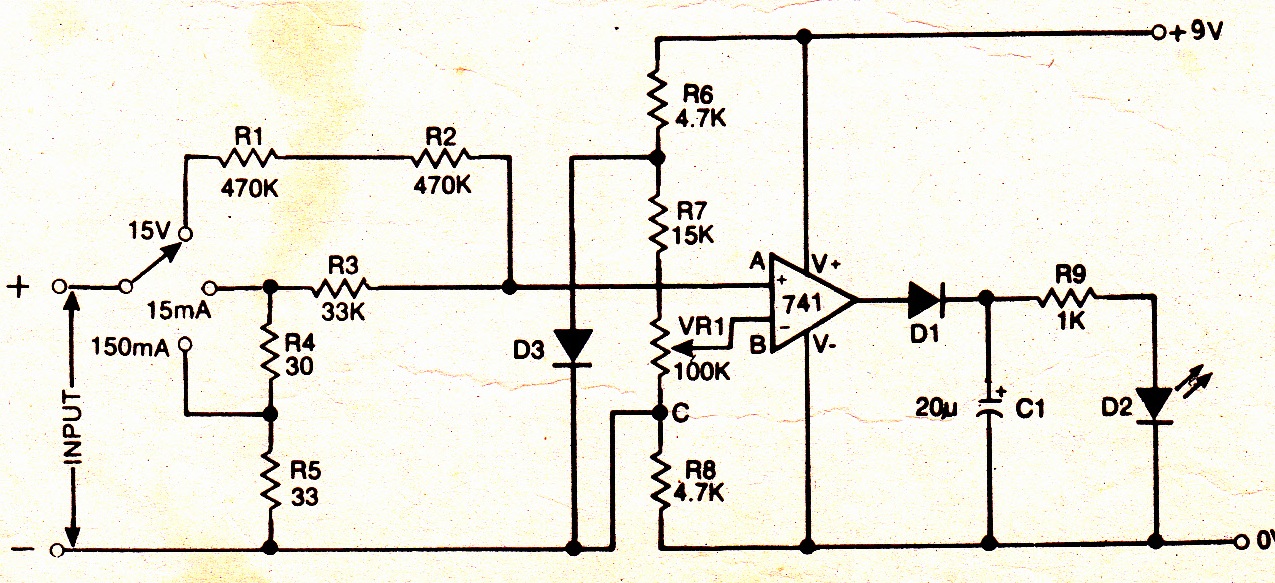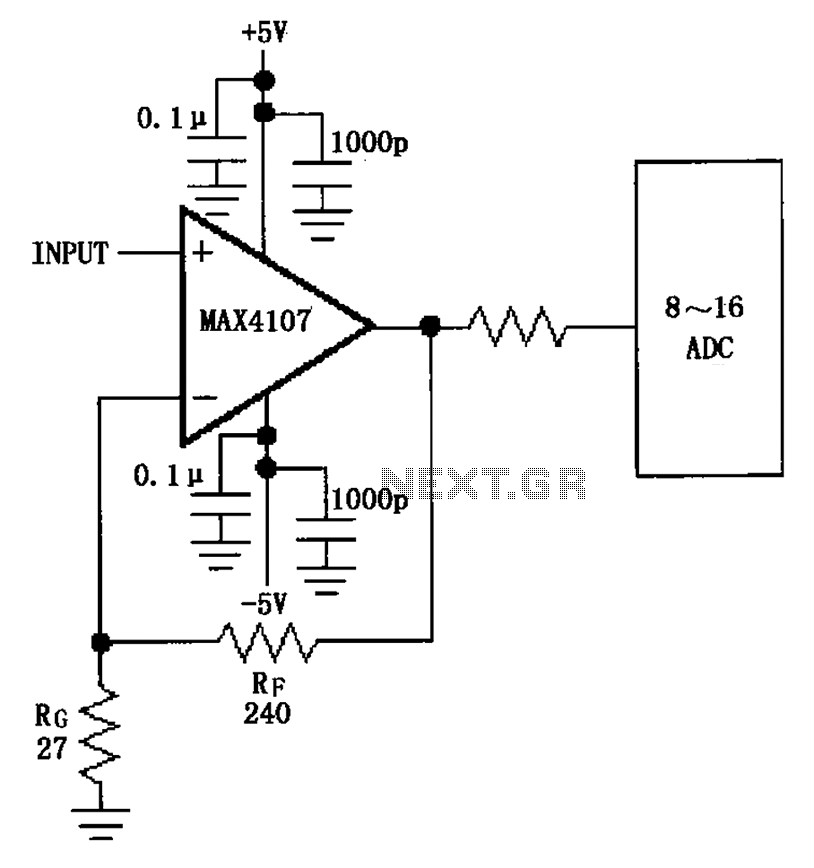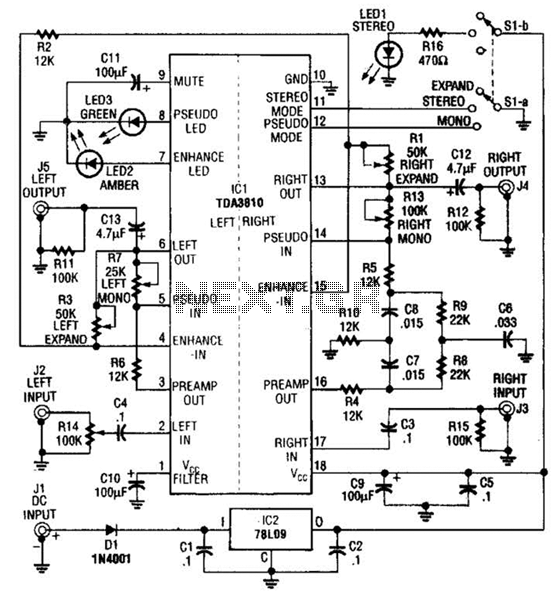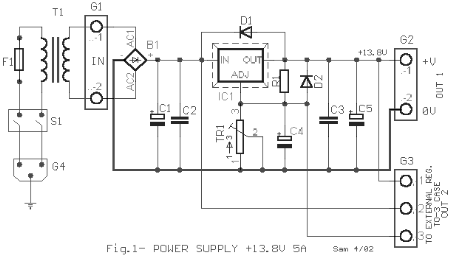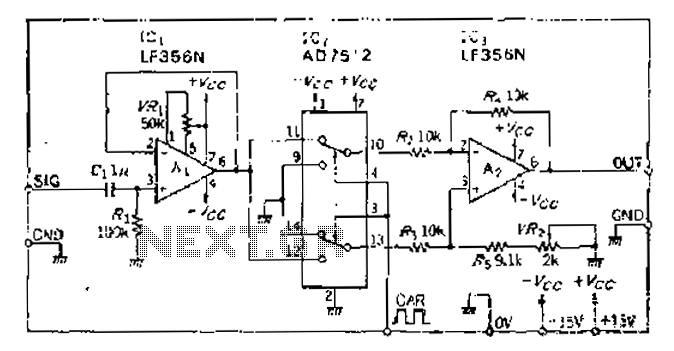
A delay circuit battery
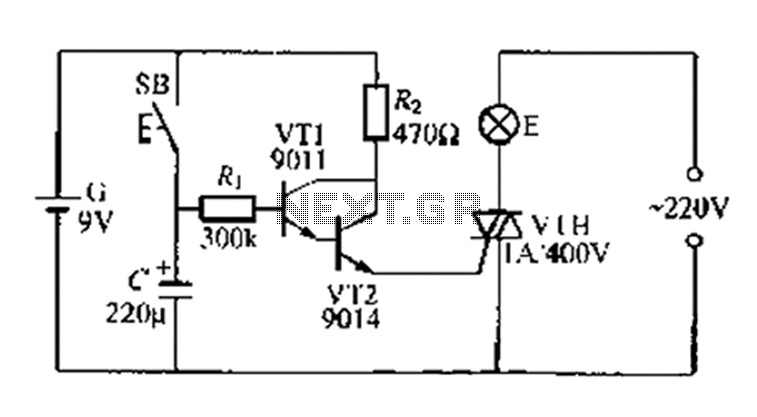
A delay circuit utilizing an electric lamp. Normally, the thyristor VTH remains off, and the lamp E does not illuminate. The lamp turns on when needed, controlled by the FSH, with the VT1 and VT2 components forming a composite pipe conduction. A 9V DC power supply is connected through resistor R, which provides the trigger current to the gate input of thyristor VT2, allowing VTH to turn on and illuminate lamp F. Simultaneously, the 9V power supply charges capacitor C quickly to the supply voltage. Once the switch SB is released, capacitor C discharges through resistor R and VT1, maintaining the composite tube in the on state until the stored charge in C is depleted. The transition from on to off state occurs when the charge is fully discharged, turning off VTH and extinguishing lamp E. The delay duration is primarily determined by the resistor R and the capacitor C discharge constants; larger values of R and C result in a longer delay, while smaller values yield a shorter delay.
The described delay circuit employs a thyristor-based design to control the illumination of an electric lamp. The circuit operates on a 9V DC power supply, which is essential for the functioning of the components involved. The thyristor VTH acts as the main switch, remaining off until triggered. The initial state of the circuit is such that lamp E is off, indicating that no current flows through the thyristor VTH.
The operation begins when the control signal from FSH activates the gate of thyristor VT2. This action allows current to flow through VT2, turning on VTH and consequently illuminating lamp F. The charging mechanism of capacitor C is crucial, as it quickly accumulates voltage from the 9V supply when switch SB is closed. The rapid charging of capacitor C ensures that it reaches the supply voltage almost instantaneously, which is vital for the timing aspect of the delay circuit.
Upon releasing switch SB, the stored charge in capacitor C begins to discharge through resistor R and thyristor VT1. This discharge process keeps the composite tube in the on state, allowing the lamp E to remain illuminated until the charge in capacitor C is fully depleted. The timing of this discharge is governed by the RC time constant, which is a product of the resistance value R and the capacitance value C. A larger resistance or capacitance will prolong the discharge time, thereby extending the duration that the lamp E remains lit, while a smaller resistance or capacitance will shorten this duration.
In practical applications, this circuit can be utilized in scenarios where a timed delay is required before turning off a light source, such as in lighting control systems or safety applications. The design is straightforward yet effective, illustrating the fundamental principles of thyristor operation and RC timing circuits in electronic systems.A delay using his electric lamp circuit. Normally, product thyristor VTH off iLi light E does not light, turn on the lights when needed, according to FSH, VT1, VTZ group into c omposite pipe conduction, 9V DC power supply through R, thyristor VT2 VTH gate input trigger current, so that VTH opened, the lamp F lights up. Meanwhile, SB 9V power supply through the capacitor (1 charge, the C fast -speed charge to the supply voltage.
After the release SB, c store electric charge to be discharged through the VT1 R., able to maintain the composite tube is turned on, electric women will not be extinguished until the C stored electrical-charged Bong after release, VT1, VT2 only by the on-state into the off state, VTH was turned off, the lamp E goes out. when asked mainly by the delay circuit R, asked about the constants C discharge, R., C values larger, extended, long time later, on the contrary it shorter.
The described delay circuit employs a thyristor-based design to control the illumination of an electric lamp. The circuit operates on a 9V DC power supply, which is essential for the functioning of the components involved. The thyristor VTH acts as the main switch, remaining off until triggered. The initial state of the circuit is such that lamp E is off, indicating that no current flows through the thyristor VTH.
The operation begins when the control signal from FSH activates the gate of thyristor VT2. This action allows current to flow through VT2, turning on VTH and consequently illuminating lamp F. The charging mechanism of capacitor C is crucial, as it quickly accumulates voltage from the 9V supply when switch SB is closed. The rapid charging of capacitor C ensures that it reaches the supply voltage almost instantaneously, which is vital for the timing aspect of the delay circuit.
Upon releasing switch SB, the stored charge in capacitor C begins to discharge through resistor R and thyristor VT1. This discharge process keeps the composite tube in the on state, allowing the lamp E to remain illuminated until the charge in capacitor C is fully depleted. The timing of this discharge is governed by the RC time constant, which is a product of the resistance value R and the capacitance value C. A larger resistance or capacitance will prolong the discharge time, thereby extending the duration that the lamp E remains lit, while a smaller resistance or capacitance will shorten this duration.
In practical applications, this circuit can be utilized in scenarios where a timed delay is required before turning off a light source, such as in lighting control systems or safety applications. The design is straightforward yet effective, illustrating the fundamental principles of thyristor operation and RC timing circuits in electronic systems.A delay using his electric lamp circuit. Normally, product thyristor VTH off iLi light E does not light, turn on the lights when needed, according to FSH, VT1, VTZ group into c omposite pipe conduction, 9V DC power supply through R, thyristor VT2 VTH gate input trigger current, so that VTH opened, the lamp F lights up. Meanwhile, SB 9V power supply through the capacitor (1 charge, the C fast -speed charge to the supply voltage.
After the release SB, c store electric charge to be discharged through the VT1 R., able to maintain the composite tube is turned on, electric women will not be extinguished until the C stored electrical-charged Bong after release, VT1, VT2 only by the on-state into the off state, VTH was turned off, the lamp E goes out. when asked mainly by the delay circuit R, asked about the constants C discharge, R., C values larger, extended, long time later, on the contrary it shorter.
